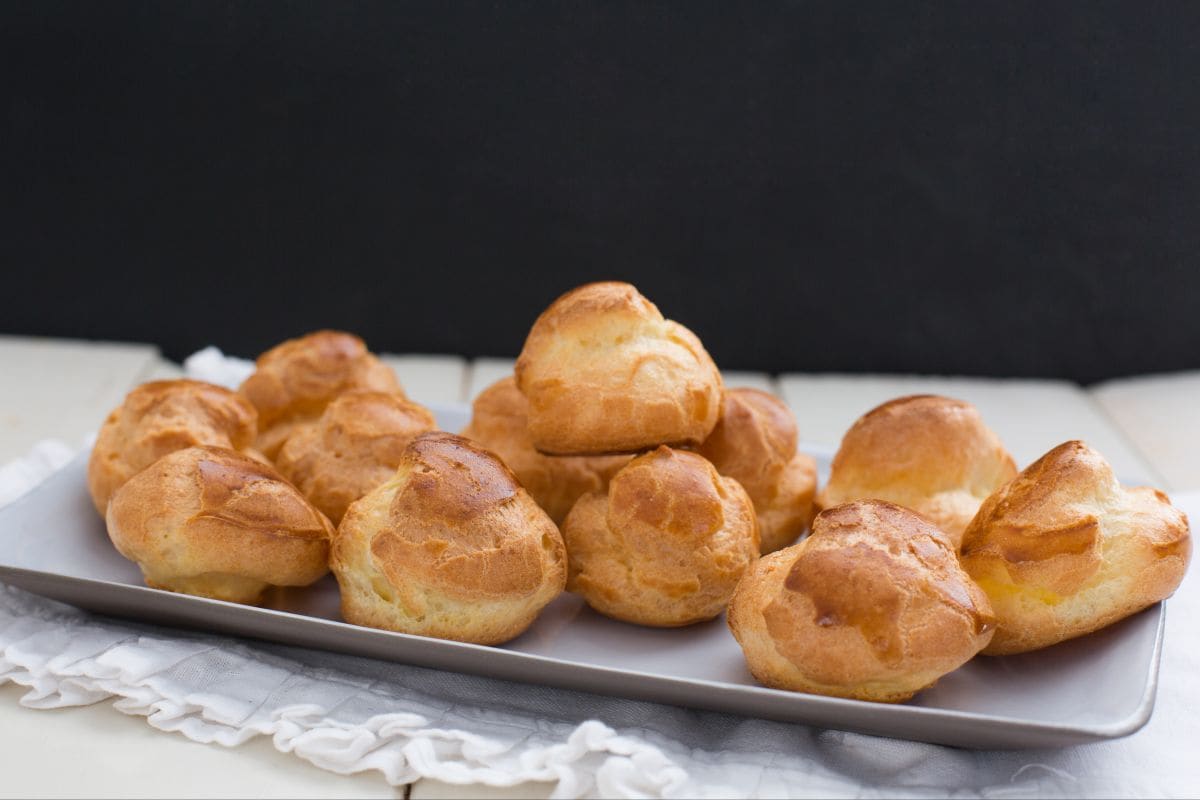Zeppole di San Giuseppe
- Average
- 1 h 20 min
- Kcal 293

Gazing at the displays of the best pastry shops, how can one not stop to admire the sweet roundness of the cute and small cream puffs or the sumptuous elegance of profiteroles? One would want to buy them all! But you can always try to make them at home, thanks to the precious advice from chef Denny Imbroisi! The credit for such deliciousness goes to the choux pastry, a basic, light, and delicate preparation, a neutral dough to be filled with delicious creams or made in a savory version for a gourmet buffet. The main characteristic of this preparation is the double cooking, in a pan and in the oven: precisely for this peculiarity it would have taken the name "pâte à chaud", or hot dough. It is precisely in the oven that the choux pastry puffs up and dries, assuming the classic shape of cream puffs, small "choux" which in French means "cabbage" because the shape resembles Brussels sprouts. It is not rare to enjoy this dough also fried, like the classic Zeppole di San Giuseppe or the typical Spanish churros or even topped with a light shortcrust for the craquelin cream puffs! Discover step by step how to obtain perfect choux pastry to create delicious recipes to offer on the most special occasions, like our cream eclairs.
And if you are looking for a way to fill your cream puffs, try our pistachio cream!

To prepare the choux pastry first pour the water 1, the milk 2, the sugar 3

and the salt 4. Also add the butter in cubes 5 and bring everything to a boil 6.

At this point add the flour all at once 7 and mix with a spatula or a wooden spoon 8. Don't be afraid of lumps and mix quickly, then cook the roux until a white film has formed on the bottom of the pot 9, it will take at least 2-3 minutes.

Transfer the obtained dough into a bowl 10 and add one egg at a time 11 always stirring with a spatula 12 to incorporate it. Don't worry if at first the dough seems separated, by continuing to stir.

Only when it has been completely absorbed, can you add the next 12. Once all the eggs are incorporated you should obtain a smooth and consistent dough (14-15).

Then transfer it inside a pastry bag, equipped with a smooth nozzle of about 1/2 inch 16. At this point take a baking tray and line it with parchment paper; to secure it, squeeze a bit of the dough on two opposite corners and in the center 17. Spacing them apart, form mounds of dough the size of a walnut 18.

Once you have filled the tray 19, with a spoon slightly moistened, lightly flatten the surface of the balls to dull the tip of the cream puffs 20. Then beat the yolk in a small bowl with a bit of water 21

and use it to brush the surface of the cream puffs 22; this will allow obtaining a uniform coloration. Bake in a preheated static oven at 430°F for about 15 minutes, until they are well golden. Avoid opening the oven during this phase. After this time, finish cooking at 355°F for another 15-20 minutes, simulating the open valve by wedging a ball of aluminum foil between the door and the structure of the oven. If you prefer to bake the cream puffs in convection mode, it will be necessary to heat the oven to 430°F; once hot, lower the temperature to 355°F and bake the cream puffs: cook for about 20-25 minutes. Take the cream puffs out of the oven 23 and let them cool before using them 24.